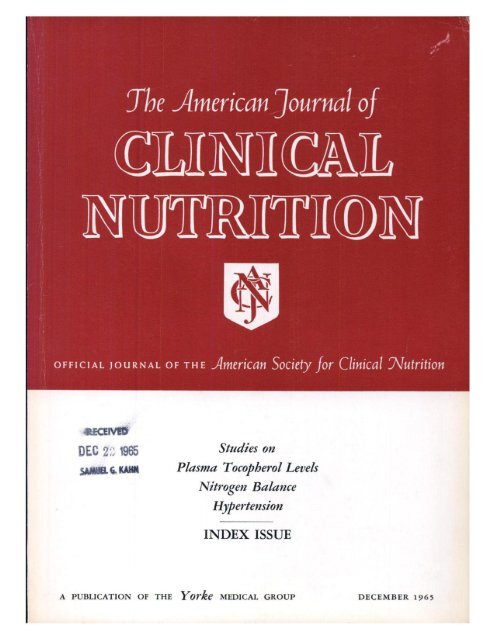五倍强化盐对印度旁遮普育龄妇女微量营养素状况的影响:一项随机社区试验
IF 6.5
1区 医学
Q1 NUTRITION & DIETETICS
引用次数: 0
摘要
需要创新的强化解决方案来解决微量营养素缺乏症,这在印度成年女性中仍然非常普遍。目的本试验的目的是评价五倍强化盐(QFS)与碘盐对印度旁遮普省育龄未怀孕妇女微量营养素状况的影响。方法采用双盲、随机、对照、社区试验。998只NPFRA随机接受:1)铁包封富马酸亚铁、锌、维生素B12、叶酸和碘(ef -QFS);2)微量元素相同的QFS,但铁为包封焦磷酸铁加乙二胺四乙酸(eFePP-QFS);或者碘盐。在入组、6个月和12个月时评估微量营养素状态的生物标志物。结果入组时,试验参与者中贫血、缺铁、低锌血症、维生素B12不足和叶酸不足的患病率分别为47.9%、59.7%、35.5%、61.5%和69.7%。在每月家访中测量的平均家庭盐消失量为6.0 g/成年女性当量/天[95%置信区间(CI): 5.9, 6.1],并且在组间或时间上没有变化。6个月时,维生素B12不足、叶酸不足和低锌血症的几率分别为80%[优势比(OR): 0.20;95% ci: 0.13, 0.31], 86% (or: 0.14;95% CI: 0.09, 0.21)和38% (OR: 0.62;95% CI: 0.41, 0.93), ef - qfs较碘化盐组低。对维生素B12和叶酸状态的影响持续12个月,并且在eFePP-QFS中与碘化盐组相比具有可比性。与加碘盐组相比,ef - qfs组铁缺乏症减少了6 (OR: 0.64;95% ci: 0.42, 0.98;P = 0.08)和12个月(OR: 0.58;95% ci: 0.35, 0.95;P = 0.06),但与碘化盐组相比,eFePP-QFS的差异不大。在两个时间点贫血没有组间差异。结论多种微量营养素盐强化可能是改善NPFRA高危人群微量营养素状况的有效策略,尤其是维生素B12和叶酸的缺乏。本研究在clinicaltrials.gov注册,注册号为NCT05166980,在Clinical Trials Registry-India注册,注册号为CTRI/2022/02/040333。本文章由计算机程序翻译,如有差异,请以英文原文为准。
Effects of quintuply-fortified salt on the micronutrient status of females of reproductive age in Punjab, India: a randomized, community-based trial
Background
Innovative fortification solutions are needed to address micronutrient deficiencies, which remain highly prevalent among adult females in India.
Objectives
The objective of this trial was to evaluate the effects of quintuply-fortified salt (QFS) compared with iodized salt on the micronutrient status of nonpregnant females of reproductive age (NPFRA) in Punjab, India.
Methods
We conducted a double-blind, randomized, controlled, community-based trial. A total of 998 NPFRA were randomly assigned to receive: 1) QFS with iron as encapsulated ferrous fumarate, zinc, vitamin B12, folic acid, and iodine (eFF-QFS); 2) QFS with the same micronutrients, but iron as encapsulated ferric pyrophosphate plus ethylenediaminetetraacetic acid (eFePP-QFS); or 3) iodized salt. Biomarkers of micronutrient status were assessed at enrollment, 6 mo and 12 mo.
Results
At enrollment, the prevalence of anemia, iron deficiency, hypozincemia, vitamin B12 insufficiency, and folate insufficiency among trial participants was 47.9%, 59.7%, 35.5%, 61.5%, and 69.7%, respectively. Mean household salt disappearance, measured at monthly home visits, was 6.0 g/adult female equivalent/day [95% confidence interval (CI): 5.9, 6.1] and did not vary across groups or time. At 6 mo, the odds of vitamin B12 insufficiency, folate insufficiency, and hypozincemia were, respectively, 80% [odds ratio (OR): 0.20; 95% CI: 0.13, 0.31], 86% (OR: 0.14; 95% CI: 0.09, 0.21), and 38% (OR: 0.62; 95% CI: 0.41, 0.93) lower in the eFF-QFS compared with the iodized salt group. Effects on vitamin B12 and folate status were sustained at 12 mo, and were comparable in the eFePP-QFS compared with the iodized salt group. There was a small, marginally significant, reduction in iron deficiency in the eFF-QFS compared with the iodized salt group at 6 (OR: 0.64; 95% CI: 0.42, 0.98; P = 0.08) and 12 mo (OR: 0.58; 95% CI: 0.35, 0.95; P = 0.06), but not in the eFePP-QFS compared with the iodized salt group. There were no groupwise differences in anemia at either time point.
Conclusions
Multiple micronutrient salt fortification may be an effective strategy to improve micronutrient status, especially vitamin B12 and folate, among NPFRA at high risk of deficiency.
Trial registration number
This study was registered at clinicaltrials.gov, with NCT05166980 and at Clinical Trials Registry-India with CTRI/2022/02/040333.
求助全文
通过发布文献求助,成功后即可免费获取论文全文。
去求助
来源期刊
CiteScore
12.40
自引率
4.20%
发文量
332
审稿时长
38 days
期刊介绍:
American Journal of Clinical Nutrition is recognized as the most highly rated peer-reviewed, primary research journal in nutrition and dietetics.It focuses on publishing the latest research on various topics in nutrition, including but not limited to obesity, vitamins and minerals, nutrition and disease, and energy metabolism.
Purpose:
The purpose of AJCN is to:
Publish original research studies relevant to human and clinical nutrition.
Consider well-controlled clinical studies describing scientific mechanisms, efficacy, and safety of dietary interventions in the context of disease prevention or health benefits.
Encourage public health and epidemiologic studies relevant to human nutrition.
Promote innovative investigations of nutritional questions employing epigenetic, genomic, proteomic, and metabolomic approaches.
Include solicited editorials, book reviews, solicited or unsolicited review articles, invited controversy position papers, and letters to the Editor related to prior AJCN articles.
Peer Review Process:
All submitted material with scientific content undergoes peer review by the Editors or their designees before acceptance for publication.

 求助内容:
求助内容: 应助结果提醒方式:
应助结果提醒方式:


